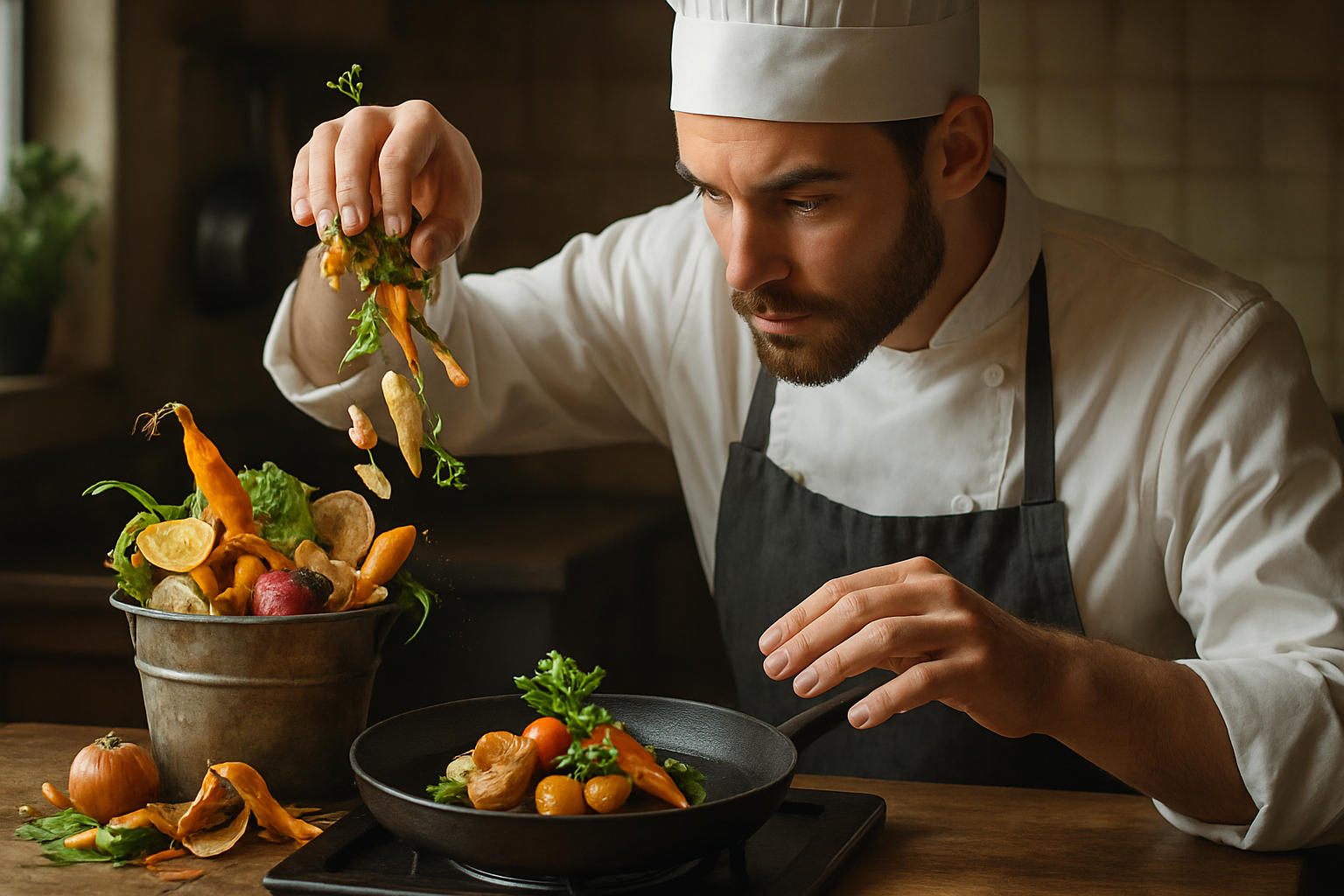Culinary Alchemy: Transforming Trash into Gastronomic Treasure
Turning kitchen scraps into gourmet delights isn't just a trendy concept—it's a culinary revolution that's changing the way we think about food waste. From carrot tops to fish bones, innovative chefs are finding ingenious ways to transform what was once destined for the bin into mouthwatering dishes that tantalize the taste buds and challenge our perceptions of edibility.

From Peels to Plates: Upcycling Produce
Vegetable peels, often discarded without a second thought, are becoming stars in their own right. Potato skins are being reimagined as crispy vessels for gourmet toppings, while apple peels are dehydrated and ground into aromatic powders for baking. Chefs are even experimenting with citrus peels, candying them for cocktail garnishes or infusing them into oils for vibrant dressings. This innovative use of produce scraps not only adds depth to dishes but also challenges us to rethink what we consider edible.
Bone Broth 2.0: Elevating Kitchen Cast-offs
The humble bone broth has received a gourmet makeover. Chefs are now using not just bones but also vegetable trimmings, herb stems, and even cheese rinds to create complex, nutrient-rich broths. These elevated stocks serve as the foundation for luxurious sauces, hearty soups, and even cocktails. By extracting maximum flavor from ingredients that would otherwise be discarded, chefs are creating a new category of umami-rich liquids that elevate dishes to new heights.
Sweet Salvation: Repurposing in Pastry
Even the world of desserts is embracing the trash-to-treasure movement. Pastry chefs are finding innovative ways to incorporate typically discarded ingredients into their creations. Spent coffee grounds are being upcycled into rich, mocha-flavored cakes, while fruit pulp from juicing is transformed into vibrant fruit leathers. Perhaps most surprisingly, aquafaba—the liquid from canned chickpeas—has become a vegan sensation, whipping up into perfect meringues and mousses that rival their egg-based counterparts.
The Future of Food: Sustainable Gastronomy
As awareness of food waste grows, so does the movement to combat it through culinary innovation. Restaurants are partnering with local farms to create closed-loop systems, where kitchen scraps are composted and returned to the soil. Some establishments are even growing their own produce using hydroponic systems fueled by compost from kitchen waste. This holistic approach to cooking not only reduces environmental impact but also creates a deeper connection between chefs, ingredients, and diners, fostering a more sustainable and mindful food culture.
Culinary Waste Warriors: Tips & Tricks
• Store vegetable scraps in the freezer to make flavorful stocks
• Dehydrate fruit peels for natural tea blends
• Use stale bread to make homemade breadcrumbs or croutons
• Transform overripe bananas into creamy nice cream
• Pickle watermelon rinds for a tangy condiment
• Infuse leftover herb stems into oils and vinegars
• Create pesto from carrot tops or radish greens
• Use fish bones to make fumets for seafood dishes
In conclusion, the transformation of kitchen scraps into culinary treasures is more than just a trend—it’s a paradigm shift in how we value and utilize our food resources. By embracing creativity and sustainability, chefs and home cooks alike are not only reducing waste but also discovering new flavors and textures that enrich our culinary landscape. As we continue to explore the untapped potential of ingredients once destined for the compost bin, we’re not just cooking—we’re participating in a delicious revolution that’s good for our palates and our planet.





